Random Caustics:
Wave Theory and Natural Textures Revisited
Overview
The interplay of light and transparent media can produce one of the most
beautiful visual patterns. For example, the fluctuations of a water surface
produce complex line-like patterns on the sides and the floor of a pool.
Using a wave equation for the propagtion of light, I have
computed these patterns. Since the water surface is periodic in my model,
and since I am using an FFT-based method, the resulting patterns are
periodic both in time and space. This is highly desirable since this provides
us with a texture map which can be used in a standard renderer, without
a substantial increase in computation time.
Many extensions and improvements are currently under investigation.
This research is reported as a one page summary in the Visual Proceedings
of this years SIGGRAPH. I'll present the material in a
Technical Sketch at
SIGGRAPH'96 in New Orleans, in the
session called "Illumination" at 10.15 am on wednesday August 7th.
Results
Variation with depth
The appearance of the caustics strongly depends on the depth of the pool,
i.e., on the distance between the water surface and the bottom of thge pool.
Here are some stills of animations computed at different depths (depth values
increase from left to right):

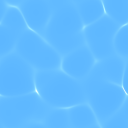
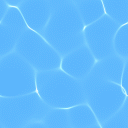
Defeating Diffraction
Each picture corresponds to the caustic pattern created by a coherent,
monochromatic wave having a wavelength equal to half the resolution used
(typically 0.01/512 meters). Physically this corresponds to a laser
light shining on a tiny patch. Spurious diffraction patterns therefore
result. There are many ways to deal with this problem. Here are several
possible solutions. From left to right: no treatment, spatial blurring,
average over several computations with different phases. The treatment
of this artefacts remains an open issue for future research. Click on the
pictures to get full resolution for better comparison.
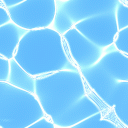
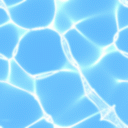
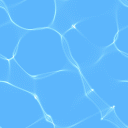
Wild Caustics
Why stick to physically meaningfull values. The following stills were
computed by providing unrealistic values for the magnitude of the waves
(see also last animation).
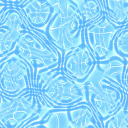
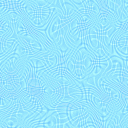
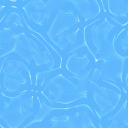
Animations
Here is a simple example of some patterns produced using these techniques.
There are 32 frames in total. Play the animation in a continuous loop
in order to observe that the animation is indeed periodic in time.
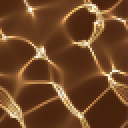
Caustics on the Bottom of a Pool (mpeg, 219727 bytes)
Here is another example...
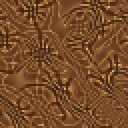
Wild Caustics (mpeg, 701922 bytes)













